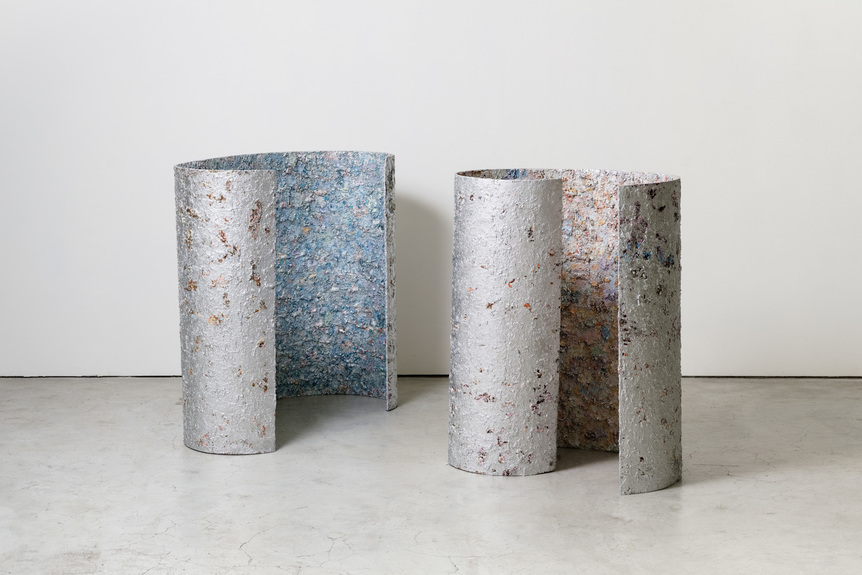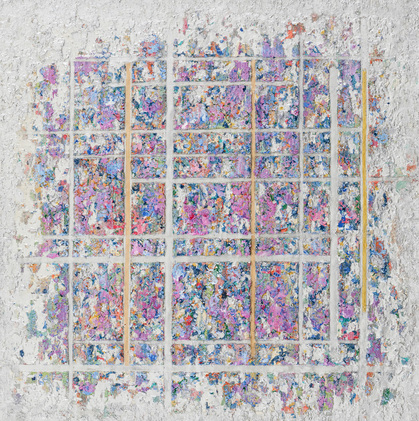-
From Current Issue
-
- Editor’s Letter Fire in the Heart
- Reviews I Gusti Ayu Kadek Murniasih
- Reviews 11th Seoul Mediacity Biennale: “One Escape at a Time”
- Dispatch Networked China
- One on One Monira Al Qadiri on Yukio Mishima
- Essays The rise of independent art spaces in pandemic-era Shanghai
- Features Tuan Andrew Nguyen
- Table of Contents
- Web Exclusives
- Archive
- Subscribe

R
E
V N
E
X
T
Installation view of MIT JAI INN’s “The King and I,” at TKG+, Taipei, 2020–21. All images courtesy the artist and TKG+.
In the 1956 film adaptation of composer duo Rodgers and Hammerstein’s musical The King and I (1951), the king dies just before the final curtain. Kneeling by his side in a puddle of hoop skirts, the palace’s English tutor, Anna, cradles his hand as his son and heir orates the order of a new day: no one will be a slave to the monarchy, none shall bow to the king. Inspired by demands for democratic reform that echo those of the young prince, as well as the mass protests that swept Thailand during 2020, Mit Jai Inn’s solo exhibition of the same name, presented at TKG+ in Taipei, takes up the provocations of political upheaval. Ushering out the colonial schoolmarm and reclaiming the titular “I,” the artist re-examines relationships between king and country in a new era.
Sculptures Siam Republic Flag & King’s Circle (2016–20) stood out like two weathered cenotaphs. The gnarled canvases curl in on themselves, holding their shape through the stubborn rigidity of thickly layered pigment. Encrusted with patches of oil paint and aluminium enamel—as were all works in the show— these centrepieces feature a technique that Mit refers to as a process of “embalming.” Like a funeral for a dying royal, the artist creates artefacts out of the cultural values of the past. Though critical of ongoing abuses of power, many proponents of the contemporary Thai student movement maintain that they did not wish to abandon royalist culture altogether, which Mit’s approach aligns with in his presentation of the complex relationship between the monarchy and the people with nuance befitting its long history. These sculptural works are not tombs, but relics—tools for reflection in times of new beginnings.
Mit’s work earnestly supporting calls for structural reform is emblematic of his own place within Thailand’s art landscape. As national scrutiny towards power imbalances intensifies, it is not difficult to draw unflattering parallels between the hegemony of old political elites and those in the art world. Yet, from his co-founding of the Chiang Mai Social Installation festival in the ’90s, to his gallery Cartel Artspace in Bangkok, he has long worked to bring attention to activity with radical potential. In his Psychedelic Screen series (2020), slashes of fluorescence emerge from the mottled base of metallic enamel. These flashes are discernible only when inspected closely in a number of the large paintings, while in others the vibrant strokes declare themselves insistently. For Mit, this colorful gesture is evocative of a 1970s “hippie” spirituality and political ethos. The reference, which calls to mind the summer of love and new age frivolity, may feel less pertinent than, say, the civil rights movement or Thailand’s own dynamic history of public uprising during the same era, however, hung in conversation with each other these variations chronicle the development of the burgeoning revolutionary energy that has erupted in the streets.
Art making has proved integral to this growing surge of student protest. Much of it has been irreverent and visceral, quickly produced and shared online or brandished above the crowds as banners. In a climate that has seen the disappearance of activists, some likely killed for incisive satirical work, Mit contributes to a necessary diversification of artistic strategies for championing progressive movements. Though his work is more applicable to the walls of the gallery than the streets, the small sculptures of his Neurons series (2020) succinctly capture the potentials of radical thought. Wrapped in canvas and anointed with the syrupy silver of aluminium enamel, twisted iron deviates from structured foundations and follows whimsical and unpredictable routes as it protrudes from the walls, invading the space of the gallery. The winding metallic paths echo the varied tangents of thought and action engendered by protest. Mit’s abstraction may differentiate his work from slogan-like pieces emblazoned across t-shirts, but his eagerness to explore the diversity of progressive thought is illuminating.
While “The King and I” may not elicit the urgency common of protest art, through a ritualistic dedication to his technique, and the extensiveness of his series, Mit worked to enumerate the variety of prospects for a growing movement.
Mit Jai Inn’s “The King and I” is on view at TKG+, Taipei, until January 30, 2021.
To read more of ArtAsiaPacific’s articles, visit our Digital Library.
















